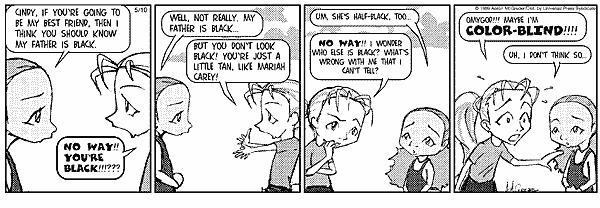top of page
For Multiracial People & Families
What does it mean to be multiracial in the fight for black lives? The following resources provide reflections and support around this question and navigating multiracial identity and family life in the face of systemic racism and anti-black racism. Until very recently multiracial people in the U.S. have been an invisible minority. The 2010 U.S. Census marked the first time that individual Americans could identify as more than one race. Yet, the reality is that multiracial people have been part of U.S. history since our first colonial settlements.
In fact, much of our current constructions of race in the U.S. , including our ideas of "black" and "white" were developed to racially classify the mixed-race children of white plantation owners and slaves. These children were often the result of sexual violence, though there are some historic accounts of consensual unions. In fact, many African Americans have multiracial ancestry due to this history. Yet laws and policies like the "one-drop rule" across U.S. colonies and states governed how multiracial people of black and white parentage could identify.
Interracial unions were illegal for much of U.S. history. It was only in 1968 during the watershed Loving vs. Virginia case, that the U.S. Supreme Court overturned centuries of "anti-miscegenation" laws that made interracial marriages illegal in states across the U.S. These laws largely impacted African Americans. Yet they were also used to criminalize interracial marriages between Asian-Americans and whites and Mexican Americans and whites in western states. Blood quantum laws were also used to regulate how mixed-race Native Americans could identify themselves racially.
Multiracial families also often include transracial adoptees-- children adopted into homes with guardians of a different racial background. The first recorded transracial adoption of an African-American child placed in a white home took place in Minnesota in 1948. Minnesota has one of the largest populations of transracial adoptees and adoptee adults.
Multiracial people and families often sit at the crossroads of major tensions and debates about racial justice in our country. In addition, multiracial people have often been used to support anti-black racism or to deny persistent racism in our country or even within our own families. Within conversations of multiracial identities it is also important to recognize how colorism, perceptions of beauty, light-skinned, or "white-presenting" privilege may work in the lives and experiences of many mixed people-- particularly those with white ancestry. There are growing resources, scholarship, and movements to hold space for multiracial people and families of all backgrounds. The materials below address multiracial and adoptee identity and racial justice from different perspectives.
(*The comic strips on this page are from Aaron McGruder's The Boondocks and feature Jazime Dubois, a multiracial character.)
What it Means To Be Mixed-Race in the Fight for Black Lives (For Harriet)
Bill of Rights for People of Mixed Heritage by Maria P.P. Root
Coming Out As Biracial
Stopped-and-Frisked for "Being A F**king Mutt" (The Nation)
How I'm Staying Committed to Racial Justice in an Interracial Relationship (For Harriet)
Multiracial in America: Who "Gets" to be 'White'?
[Website] Mixed Race Studies
[Blog] Mixed Dreams
[Website] The Lost Daughters: Writing Adoption From A Place of Empowerment & Peace
Transracial Adoption: Why Parents of Black Children Need to Support Black Lives Matter
How to Talk To Kids About Race & Racism (Rage Against the Minivan)
Interracial Love is Not a Societal Cure All
Mixed Like Us: Ways to Support Biracial Children at Home & In School (Huffington Post)
Jesse Williams Discusses Biracial Privileges (The Root)
Alice Walker Wrote A Poem About Jesse Williams (Vulture)
[Video] Biracial Hair Poem
Dreams From My Father: A Story of Race & Inheritance by Barak Obama



bottom of page